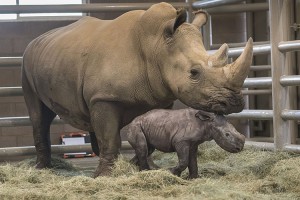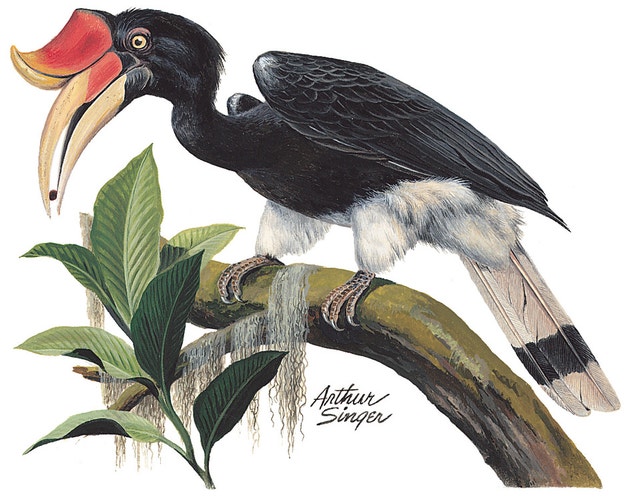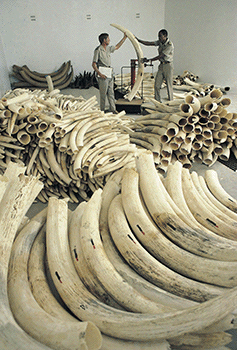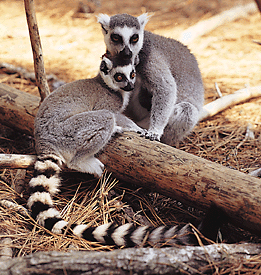Saving the White Rhino
Monday, August 12th, 2019August 12, 2019
Late last month, on Sunday, July 28, a southern white rhinoceros calf was born at the San Diego Zoo Safari Park in southern California. The baby rhino, named Edward, marks the first instance of a successful artificial insemination (pregnancy induced by other than natural means) birth of a southern white rhino in North America. Artificial insemination of southern white rhinos, which were once endangered, has rarely been successful. Just two other southern white rhinos have been born this way prior to Edward’s joyful appearance. But baby Edward may soon have company. A second artificially inseminated southern white rhino is due to give birth at the safari park later this year.

One-day old Edward shelters beneath his mother, Victoria, at the Nikita Kahn Rhino Rescue Center at the San Diego Zoo Safari Park on July 29, 2019. Credit: © San Diego Zoo
Edward’s mother, Victoria, was artificially inseminated on March 22, 2018, following hormone-induced ovulation. White rhino gestation (the period of pregnancy) is normally around 485 days—but Victoria carried her calf for 493 days. That’s more than 16 months! The San Diego Zoo Safari Park, a center for the preservation and display of endangered species, has naturally bred southern white rhinos before. But the artificial insemination and Edward’s successful birth represented an important step in increasing white rhino as well as other rhinoceros populations that are critically endangered—particularly the northern white rhino, a subspecies of the southern white rhino.
Only two northern white rhinos remain on Earth, and both are female and beyond breeding age. The last male died in March 2018. Scientists have access to frozen reproductive material of the northern white rhino, however, and they hope to use artificial insemination or in vitro fertilization (IVF) to allow a southern white rhino to act as a surrogate mother. In IVF, an embryo is created in a laboratory and then transferred to a surrogate mother. Scientists hope to achieve a northern white rhino birth within the next 10 years. Without some form of assisted reproduction, the animals will soon be extinct.
Southern white rhinos, too, once stood on the brink of extinction. In the early 1900′s, overhunting and habitat loss had reduced Africa’s southern white rhino population to fewer than 50 animals. Protections and conservation measures allowed the population to rebound, however, and today thousands of animals live both in the wild and in parks and zoos around the world.
The white rhino is the largest of all rhinoceroses. It stands about 5 to 6 feet (1.5 to 1.8 meters) tall. In some cases, it may be over 6 feet (1.8 meters) tall and 15 feet (4.6 meters) long. It weighs up to 4 tons (3.6 metric tons). The animals face grave threats from habitat loss and poachers, who illegally kill rhinoceroses and sell their horns and skin. In some Asian traditions, the powdered horn of the rhinoceros is believed to have healing qualities. Rhinoceros skin, blood, and urine are also sometimes used in traditional medicine.





